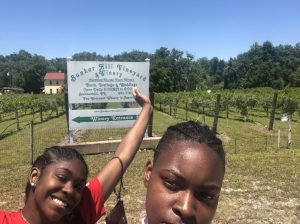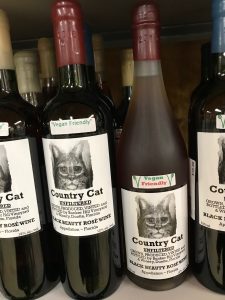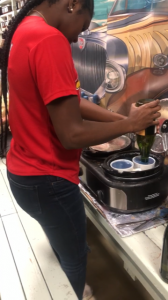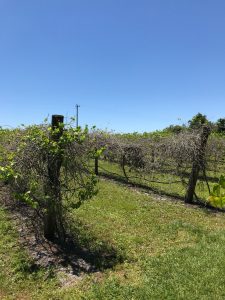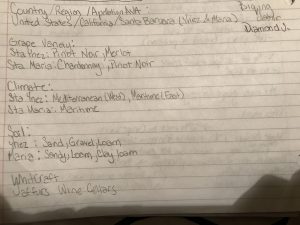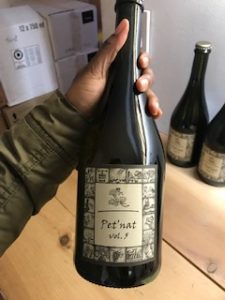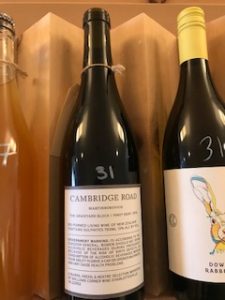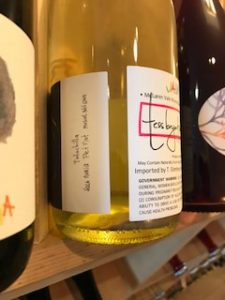Over spring break, I had the opportunity to visit a mom and pop vineyard/winery in Parrish, Florida. Larry and Lenora Woodham both run Bunkerhill Vineyard and Winery. This establishment has been open for over 20 years. The Woodham’s are the sole owners and built their land from the ground up. This couple was very humble, gracious, uncensored, and happy to inform us on how the establishment runs, and everything we need to know about the wine industry. The Woodham’s opened up our eyes to sustainability in the beverage and hospitality industry.
Firstly upon arrival Mr.Woodham brought us into the retail wine cave. In this cave were bottles ready for sale, and a tasting area. Mr.Woodham first broke down the wine laws to us that he had posted freely on the wall for customers to see. All of their wine is grown, produced, vinted and, bottled on the establishment. They gave us a keynote when reading wine labels, to look for those words (In the United States). Not only do they produce grape wine, but they produce wine from local fruits and vegetables. Only 3% of their fruits are outsourced. Due to them making wine from whole fresh fruit, they put natural on all of their wine bottles except for grape wines, which it is illegal. Also on their wine label includes the vintage year and various titles of local animals.
Though at Bunkerhill they do various fruit wines, they do specialize in their grape wine. The only grape variety that they use is the Muscadine grape also known as vitis rotundifolia. According to Crfg, the muscadine grape is native to southeastern United States.These grapes naturally have a thicker skin that can handle this AVA’s naturally maritime climate. In Florida they are surrounded by many lakes which moderates the heat. Florida does get some rain but when it is not enough, they use drip irrigation, with the help of solar panels according to their site. The Woodham’s informed us that harvest for them is in early august. In the specific time that we visited, the vines were just waking up from dormancy. We asked the Woodham’s about pests and how they control it. All of their practices are organic and they are also sustainable. They mentioned their main pests are racoons, whom with their hands can damage the trained vines. Therefore thy capture them unharmfully, and release them into wildlife.
The Woodham’s vinify their wines in a carboy glass inert vessel. This is done because eventually steel releases chemicals into wine and, oak barrels are very porous and unsustainable in their opinion. I inquired about the temperature of the wine cave. Mr.Whoodam said that they do not refrigerate their wine cave because they prefer their wine to be at the temperatures of the Earth. The wine case was made out of steel. The interior is made from storm damaged trees that keeps the cave from getting too warm. Only when completely necessary they use refrigeration, just to keep the wines from being too warm. As far as their sparkling wine, they prefer to do it the traditional method. According to the Society of Wine Educators, the traditonal method originated in France and is the most pricey way to sparkle wine. As usual they make their base wine in a carboy, then for the second fermentation, they do it in 750 mL bottles (which are 100% recycled from returning customers), and riddle the bottle, disgorge it, and reserve it for at least a year. Their base wines are also reserved for minimum one year in a carboy. After taking a tour of the Wine Cave, we went back to the tasting room/ retail shop and got to analyze some wines. We also had the chance to wax bottles. I didn’t get to taste but Massiah did. She tasted a sparkling red, and white. Also she got to taste a blueberry and mango wine. Ms.Lenora Woodham assisted with the wine tasting and was very knowledgeable. She even paired some of their homemade jam to pair with one of their dry wines.
Overall the experience was amazing and i’m very thankful to the Woodhams for being very informative and open.
Works Cited
Bunker Hill Vineyard and Winery, retrieved from http://www.bunkerhillvineyard.com/Home.php
Muscadine Grape, retrieved from https://www.crfg.org/pubs/ff/muscadinegrape.html
Society of Wine Educators, Certified Specialist of Wine Study Guide. 2018, Print.

